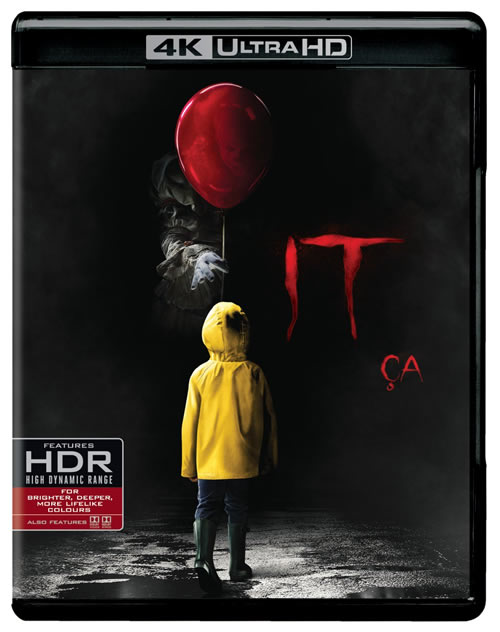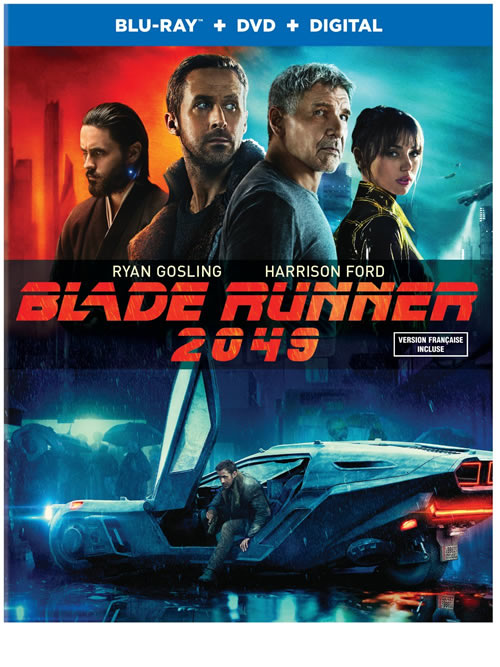 |
||
Blade Runner sequel was meant for 4K - and 'IT' isn't too bad if given a chance
| ||
Still, I'm glad I saw it and will see it again. It's a decent follow up to the original Blade Runner, though it also suffers from typical Hollowood mindset - for example, all the people in authority except for the main antagonist (who, naturally, is a rich capitalist) are female. Here, we get Robin Wright in the M. Emmet Walsh role from the original, as the Blade Runners' boss; alas, her thespian chops aren't sufficient to shine Walsh's shoes.
Ryan Gosling, who I'd never seen before, is fine as K, the docile replicant created to hunt down others of his kind. Harrison Ford brings his usual facial expression to recreating Rick Deckard, though he isn't around a lot and doesn't do much while he's there. But he gets co-star billing, so good on him.
Dave Bautista, who played my favourite character in the Guardians of the Galaxy films (Drax), has a nice cameo at the beginning (and another nice cameo in the supplements), while newcomer Ana de Armas is wonderful in her role as a virtual girlfriend. Jared Leto is good in his role as the evil capitalist (though in the extras on the Blu-ray he points out that the guy may not be as evil as we're supposed to think he is. Guess he'll never work in Hollowood again…).
Director Villeneuve and his team have done a really nice job on the film's look and feel, even to including some sounds and musical themes from the original to help put us back into the Blade Runner universe. The movie is gorgeous to see, just like the original was, and Villeneuve has tried to do as much of the filming "live" instead of using a lot of CG effects. Naturally, there's some CG, but overall the movie looks very real.
That said, the best way to watch Blade Runner 2049 (the film that also shows how you can have a sexual threesome with only two people in the room) is on Warners' 4K disc, which looks and sounds fantastic. Presented, as of course it should be, with High Dynamic Range, the picture positively pops off the home theatre screen and I wished I had more than 55 inches diagonally on which to enjoy it.
Still, my reference Panasonic 4K TV took the output from Oppo 4K player and presented it perfectly. The image is virtually flawless, with wonderfully deep colours and textures you can almost reach into the screen and touch. This is definitely a reference quality picture. I read somewhere that BR 2049 was shot digitally, so that might help account for the exquisite picture.
The audio comes in either Dolby Atmos (which is backward compatible to Dolby TrueHD) or DTS HD Master Audio 5.1. It isn't as dynamic or "in your face" as some soundtracks - such as Christopher Nolan's Dunkirk and Interstellar - but it's plenty dynamic enough and offers terrific fidelity via all of your home theatre's audio channels however many they may be.
Warner Bros. 4K disc package also contains a conventional, 1080p Blu-ray version of the film so, as is normal with the 4K discs I've seen to date, you can buy the 4K version even if you haven't moved to 4K yet, using the Blu-ray until you do. That's a nice bit of anti-planned obsolescence.
The Blu-ray also contains some pretty interesting supplements, including three short features (all of which are done very well) that help bridge the three decade gulf between the two Blade Runners. It might be interesting to watch these before sitting down for the actual movie, though I never thought of that at the time (I was anxious to get at the film!).
You also get a couple of interesting features, one of which focuses on the actual creation of the film and one that looks at the casting choices. The former shows that, even if the studio was looking for a quick buck, the filmmakers were intent on doing it right - even to hiring Syd Mead (who designed the original's future tech) to help ensure the result looked like a Blade Runner movie.
Extras also include some mostly forgettable looks at the world of Blade Runner that are more promotional than substantive.
I went back and watched my Blu-ray copy of the 1982 original a few weeks before receiving the 4K disc of the new film and it holds up rather well. It still looks and sounds great, and the story still works. One downside is that I got to see Rutger Hauer and M. Emmet Walsh again and realized after watching 2049 that it must be tough finding acting chops of that calibre these days, since none of the new folks can hold a candle. Even Ford was better in the original - of course, he had something to do there.
I'm not sure we'll be thinking about Blade Runner 2049 in the way Scott's original is regarded in the world of intelligent sci-fi films - it does seem more than a tad disposable, even if only because it never really wraps anything up - but it's far better than I expected and well worth a couple of viewings in your home theatre. Especially in 4K HDR.

Making sense of IT…
IT could have been just another teen buddy horror flick, and seems to try very hard to be just that, but about half way through the film, just when I was hoping it would wrap up earlier than its running time would indicate, it either got a lot better or I suddenly became a lot more tolerant of it - if not IT.
As with so much Stephen King stuff, IT unfolds in a small town in Maine (Derry, in this case), where a shapeshifting demon (or something equally awful) who likes to appear as Pennywise the Clown but who can also appear as people close to the protagonists or, apparently, anything else.
Yep, an evil Odo. I wonder, too, if they'd hired an actor fatter than Bill Skarsgard, would they have had to call the villain "Poundfoolish?"
Anyway, a group of "loser kids" ends up forming their own ragtag little band of reluctant evil fighters once they figure out that the evil force they've all witnessed in one way or another is actually a force that shows up every generation or so and makes off with a bunch of kids. And no, it isn't a documentary about the Podestas…
Together, they sally forth into the evil underworld to ensure that Pennywise doesn't make off with any more of their brothers, sisters, or other just plain townsfolk.
Before we get there, however, we're treated to what have to be the dumbest set of kids since the last set of clichéd dumb Hollowood kids. They're either incredibly dumb or they've never watched a horror movie in their lives, which seems doubtful since this is basically the nerd brigade.
So we get to see them do stupid things like go into darkened rooms and other places after hearing a strange noise, not even attempting to turn on a damn light even if they're in their own home and there's been no sign of a power failure. It's lazy horror movie making and it wasn't helped by the use of music to heighten the tension that should have been there without it but, since these kids were too dumb to care about, wasn't.
We have the token black kid, the token hot nerdy chick, the fat kid, the cool kids/bullies (with their Trans Am) and questionable adults who either don't understand their kids or are at best dark influences themselves. All very cliché.
Then, it's almost as if someone had hit the director with a two by four, because all of a sudden it starts to come together and things get quite creepy indeed. The ending is a tad unsatisfying because we aren't sure whether Pennywise has been offed successfully or if he'll be back in IT 2. Then the movie ends with a title card that hints more than broadly at the answer, which means the entire movie has just been a prologue to a presumed sequel.
At least they're not trying to shoehorn a thousand page novel into a two hour movie.
IT isn't nearly as good an example of 4K as Blade Runner 2049, but the HDR (High Dynamic Range, which promises a wider colour spectrum and a brighter and deeper visual experience, comes in handy in the abundance of darkened scenes that otherwise might look like big masses of black with little nuance or detail. So that's good.
The disc also has Dolby Vision HDR, which is another type of HDR - much like Dolby TrueHD and DTS HD Master Audio are competing lossless audio systems but do the same basic job. I haven't tried Dolby Vision but, if it's anything like the difference between those audio formats, it's a difference that doesn't make much difference in the real world. But it's nice to have choices - as long as your hardware offers the technology.
Audio is Dolby Atmos, which is backward compatible but there's also a DTS-HD Master Audio track to which my player defaulted, and it worked just fine. It's quite a dynamic soundtrack, with a musical score I found a bit John Williams-esque (that's not a bad thing!), and it makes good use of all the surround channels as well as the low frequency channel. Surround sound is great in a horror flick, where things creep up on you from all around, and that's the case with IT.
Warner Bros. 4K disc package also included a conventional Blu-ray with the movie and supplements and a download code.
Extras include a trio of featurettes (Pennywise Lives!, The Loser's Club, and Author of Fear), that are pretty good. The last one, obviously, is about Stephen King, and here we have the author talking about his inspiration for the original book.
You also several deleted scenes, as well as alternate and extended versions, which were better than I expected.
Of the two films reviewed here, Blade Runner 2049 is the better example of cinefantastique, and it's also the better example of how great 4K can be. We'll see if it's still being talked about in 30 years.
Copyright 2018 Jim Bray
TechnoFile.com
Jim Bray's columns are available from the TechnoFile Syndicate.


